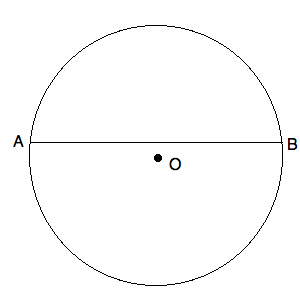Geometry
Help Questions
GRE Quantitative Reasoning › Geometry
What is the slope of a line which passes through coordinates 

Explanation
Slope is found by dividing the difference in the 

Which of the above-listed lines are parallel?


None of them

All four lines

Explanation
There are several ways to solve this problem. You could solve all of the equations for 




Let's solve each for 
Here, you need to be a bit more manipulative with your equation. Multiply the numerator and denominator of the 

Therefore, 


There is a line defined by the equation below:
There is a second line that passes through the point 
Explanation
Parallel lines have the same slope. Solve for the slope in the first line by converting the equation to slope-intercept form.
3x + 4y = 12
4y = _–_3x + 12
y = –(3/4)x + 3
slope = _–_3/4
We know that the second line will also have a slope of _–_3/4, and we are given the point (1,2). We can set up an equation in slope-intercept form and use these values to solve for the y-intercept.
y = mx + b
2 = _–_3/4(1) + b
2 = _–_3/4 + b
b = 2 + 3/4 = 2.75
Plug the y-intercept back into the equation to get our final answer.
y = –(3/4)x + 2.75
For 


two
The two values are equal.
Cannot be determined.
Explanation
Therefore the 16 inch pizza is the better deal.

O is the center of the circle above.
The length of 

Quantity A: The area of the circle.
Quantity B:
Which of the following is true?
Quantity A is greater.
Quantity B is greater.
The two quantities are equal.
The relationship cannot be determined.
Explanation

O is the center of the circle above.
The length of 

Quantity A: The area of the circle.
Quantity B:
Do not be tricked by this question. It is true that 







O is the center of the circle above.
The circumference of the circle above is 
Quantity A: The length of 
Quantity B:
Which of the following is true?
Quantity B is larger.
Quantity A is larger.
The relationship cannot be determined.
The two quantities are equal.
Explanation
Now, we know that the circumference of a circle is:

This means that the diameter of our circle is must be 


Which of the following lines is perpendicular to the line 
Explanation
Perpendicular lines will have slopes that are negative reciprocals of one another. Our first step will be to find the slope of the given line by putting the equation into slope-intercept form.
The slope of this line is 

Now we need to find the answer choice with this slope by converting to slope-intercept form.
This equation has a slope of 
The equation of a particular line is as follows:

What is the slope of a line perpendicuar to this one?
Explanation
The slope of a perpendicular line is the opposite reciporical of the originial slope.
The opposite would be changing the sign from positive to negative or vice versa.
The reciporical is flipping the fraction or switching the numerator and denominator.
This equation is in slope-intercept form,
meaning m represents the slope of the equation.
Since the original is 

An obtuse Isosceles triangle has two sides with length 









Explanation
By definition, an Isosceles triangle must have two equivalent side lengths. Since we are told that 







Now, apply the formula: 
Then, simplify the fraction/convert to mixed number fraction:
A cylinder with volume of 

Explanation
To begin, you must solve for the height of the original cylinder. We know:
For our values, we know:
Now, divide both sides by 
So, if we have a new radius of 






































































